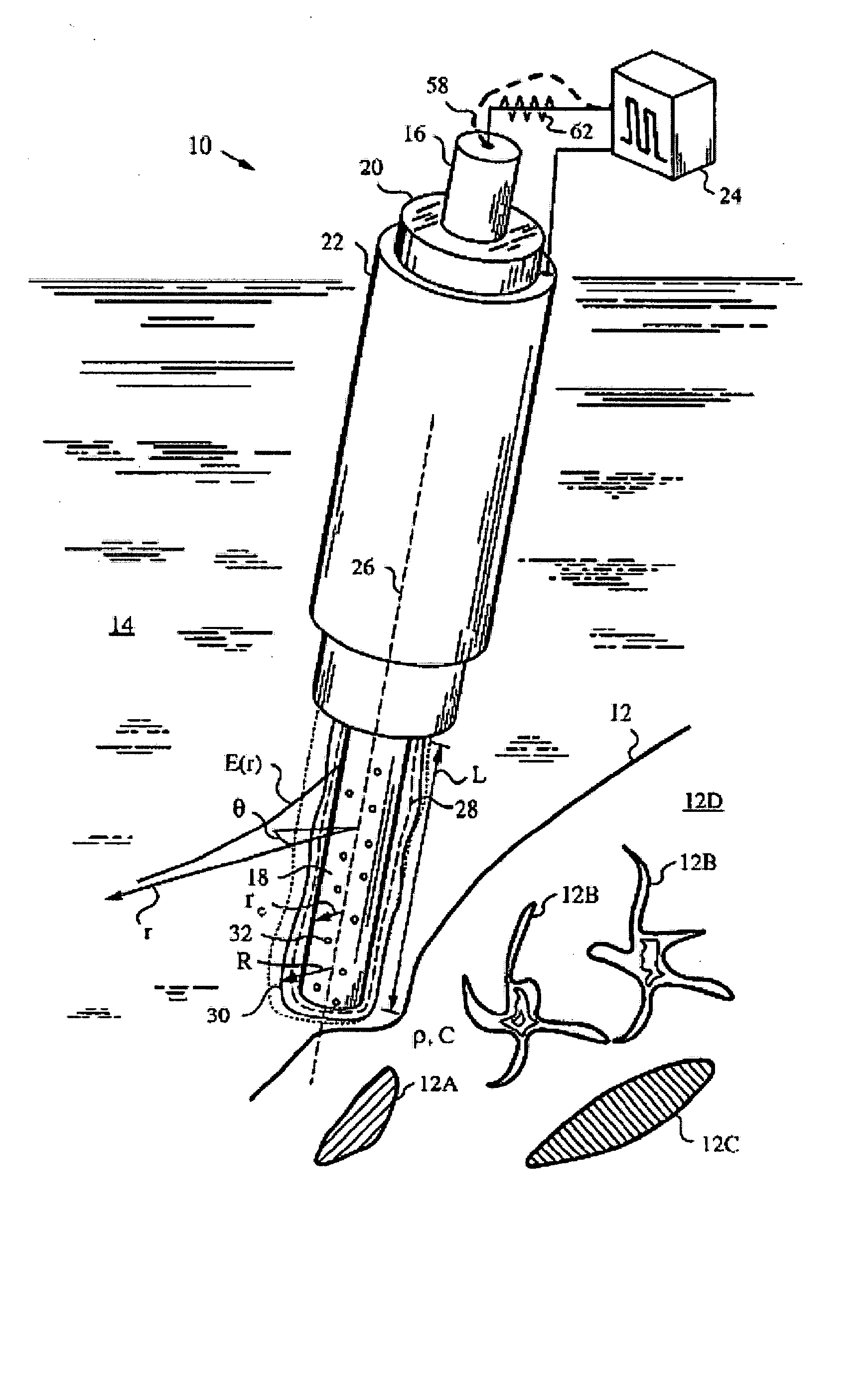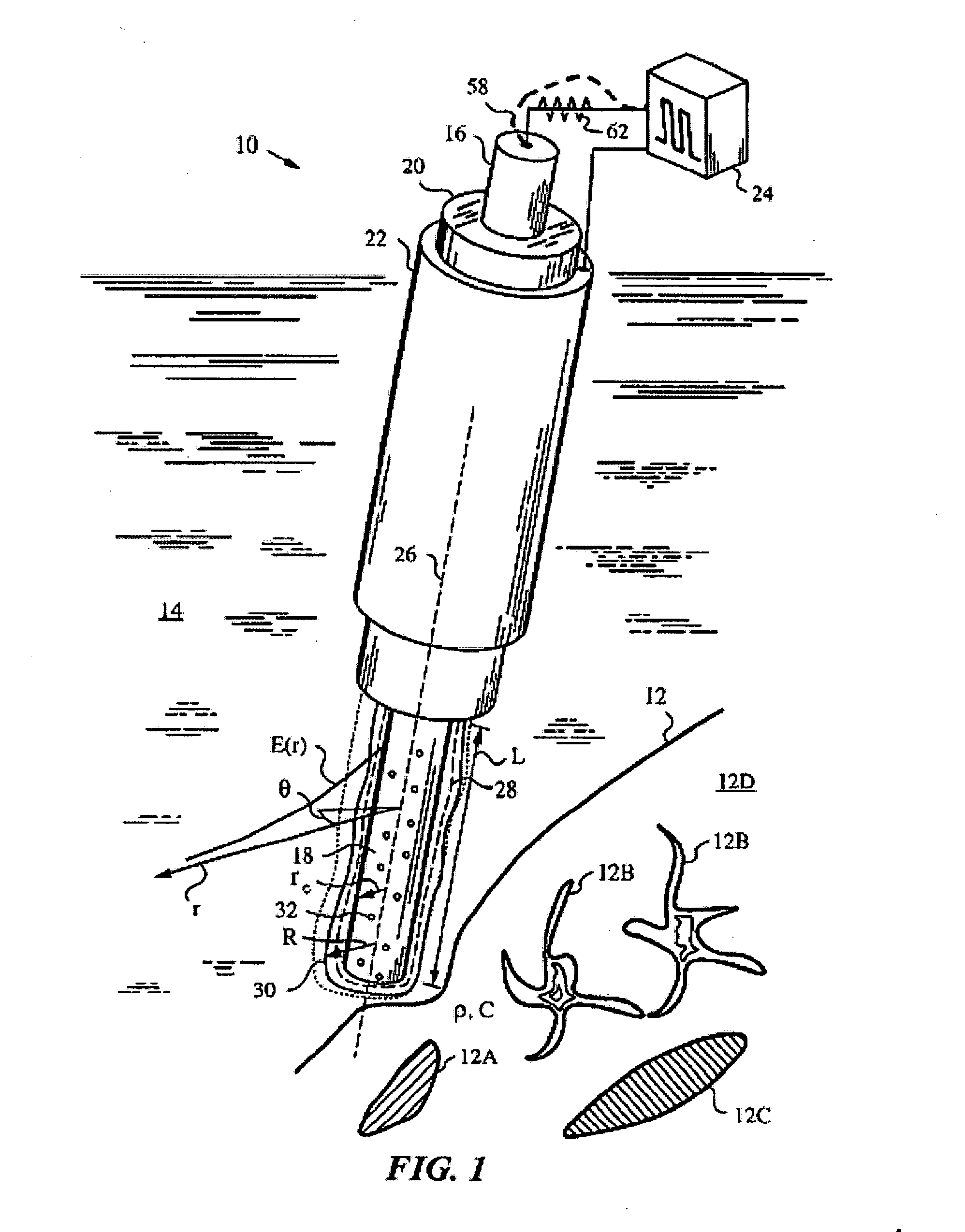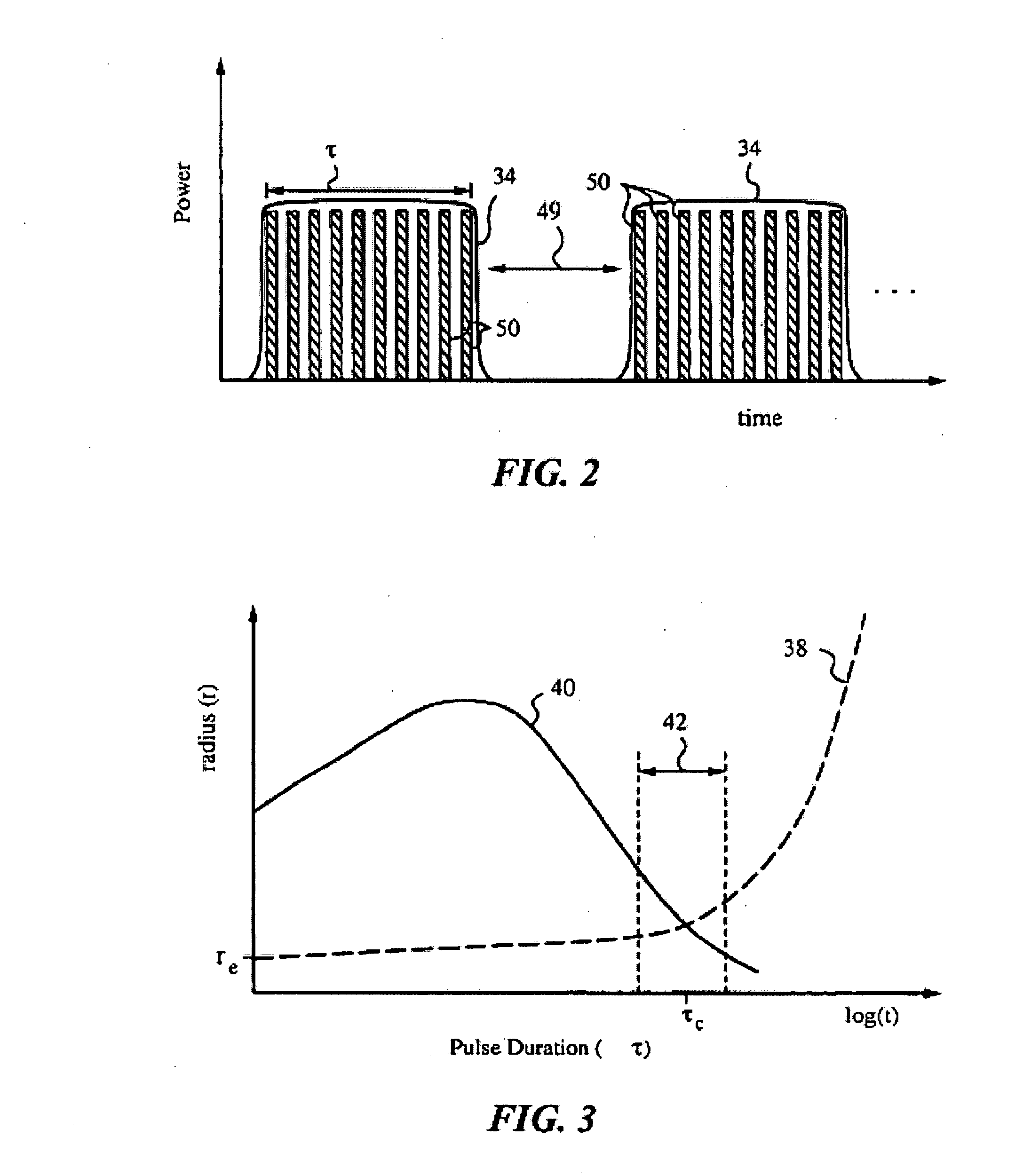Method and apparatus for plasma-mediated thermo-electrical ablation
a thermoelectrical ablation and plasma technology, applied in the field of plasma-mediated thermoelectrical ablation, can solve the problems of 700 m into surrounding tissue, inability to control the depth of tissue damage (necrosis) in the tissue being treated, so as to minimize the damage zone produced, minimize heat loss, and efficient thermal ablation
- Summary
- Abstract
- Description
- Claims
- Application Information
AI Technical Summary
Benefits of technology
Problems solved by technology
Method used
Image
Examples
Embodiment Construction
[0057]FIG. 1 illustrates an apparatus 10 for cutting a material 12 submerged in a conducting liquid medium 14. In this embodiment material 12 is a biological tissue made up of various types of tissue including muscle tissue 12A, nerve tissue 12B, bone 12C and soft tissue 12D. In general, however, material 12 can be any conducting or non-conducting material which requires cutting and can include materials such as cellulose, e.g., wood and cellulose-based materials as well as various types of non-conducting plastics. Liquid medium 14 can be any type of electrolyte. In the present example, liquid medium 14 is a physiological medium, for example an isotonic saline solution.
[0058] Apparatus 10 has a cutting electrode 16 with an elongate cutting portion 18. In this embodiment, the entire cutting electrode 16 is in the form of a wire electrode with circular cross section defined by a radius re. The material of wire electrode 16 can be any suitable conductor such as a metal like Tungsten, ...
PUM
 Login to View More
Login to View More Abstract
Description
Claims
Application Information
 Login to View More
Login to View More - R&D
- Intellectual Property
- Life Sciences
- Materials
- Tech Scout
- Unparalleled Data Quality
- Higher Quality Content
- 60% Fewer Hallucinations
Browse by: Latest US Patents, China's latest patents, Technical Efficacy Thesaurus, Application Domain, Technology Topic, Popular Technical Reports.
© 2025 PatSnap. All rights reserved.Legal|Privacy policy|Modern Slavery Act Transparency Statement|Sitemap|About US| Contact US: help@patsnap.com



